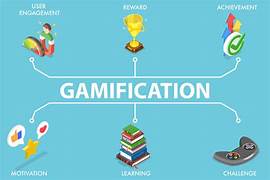What Are the Benefits and Drawbacks of Gamification in E-learning?
Gamification has emerged as a powerful tool in the realm of e-learning, transforming traditional educational methods by incorporating game-like elements to motivate learners and enhance engagement. By blending education with entertainment, gamification aims to make learning more interactive and enjoyable. However, like any educational strategy, it comes with its own set of benefits and drawbacks. This article explores both sides of gamification in e-learning, offering insights into its impact on modern education.
Benefits of Gamification in E-learning
1. Increased Engagement
Gamification leverages elements such as points, badges, leaderboards, and rewards to captivate learners. These elements tap into human psychology, particularly our intrinsic desire for achievement and recognition. Engaged learners are more likely to retain information and actively participate in their learning journey.
2. Enhanced Motivation
By introducing challenges and immediate feedback, gamification motivates learners to progress through courses. Features like level progression or unlocking new content create a sense of accomplishment, encouraging students to stay committed to their learning goals.
3. Improved Knowledge Retention
Interactive and immersive experiences help learners better retain information. For instance, using simulations and role-playing games allows students to apply theoretical knowledge in practical scenarios, reinforcing learning through practice.
4. Personalized Learning Experiences
Gamification enables adaptive learning paths tailored to individual needs. For example, a student struggling with a particular concept might receive additional challenges and resources to help them improve, while advanced learners can access more complex tasks.
5. Promotes Healthy Competition
Leaderboards and competitive elements inspire learners to perform better. Friendly competition among peers fosters a collaborative yet competitive environment, pushing learners to achieve their best.
6. Real-Time Feedback
Gamified e-learning platforms often provide instant feedback, allowing learners to identify mistakes and correct them immediately. This feature supports active learning and helps students track their progress effectively.
7. Encourages Collaboration
Many gamified platforms incorporate team-based challenges or multiplayer games, promoting collaboration among students. This teamwork-oriented approach not only enhances learning outcomes but also builds interpersonal skills.
8. Catering to Different Learning Styles
Gamification incorporates visual, auditory, and kinesthetic elements, making it suitable for diverse learners. Whether through interactive quizzes, storytelling, or hands-on activities, it caters to varied preferences and needs.
Drawbacks of Gamification in E-learning
1. Overemphasis on Rewards
One of the primary criticisms of gamification is the potential for learners to become overly focused on external rewards rather than intrinsic learning. This reliance on rewards can undermine genuine interest in the subject matter.
2. Inequality Among Learners
Gamified systems that emphasize competition may inadvertently disadvantage some learners, particularly those who struggle to keep up with peers. Constant comparison through leaderboards can lead to feelings of inadequacy and demotivation.
3. Risk of Oversimplification
Complex subjects may be oversimplified to fit a gamified framework, potentially sacrificing depth and critical thinking for the sake of entertainment. This trade-off can dilute the educational value of the content.
4. Time-Consuming Design
Creating a well-structured gamified course requires significant time and effort. From designing engaging game mechanics to aligning them with educational goals, the development process can be resource-intensive for educators and organizations.
5. Technical Challenges
Gamification often relies on sophisticated technology, including interactive platforms and mobile applications. Technical issues, such as software glitches or lack of access to appropriate devices, can hinder the learning experience.
6. Potential for Addiction
Gamified learning platforms that heavily rely on game-like mechanics may inadvertently lead to addictive behaviors. Learners might prioritize earning points or achieving high scores over meaningful engagement with the subject matter.
7. Not Suitable for All Subjects
While gamification excels in fields like language learning or STEM, it may not be as effective for subjects that require deep contemplation and analysis, such as philosophy or literature. The game-like approach might trivialize complex topics.
8. Cost of Implementation
Developing and maintaining gamified platforms can be costly, particularly for smaller educational institutions or organizations. The financial burden may limit accessibility to such resources, creating disparities in education.
Striking a Balance
To maximize the benefits of gamification while minimizing its drawbacks, educators and institutions must adopt a balanced approach. Here are some strategies:
1. Focus on Learning Outcomes
Game mechanics should serve educational objectives rather than overshadow them. By prioritizing learning goals, educators can ensure that gamification enhances rather than detracts from the educational experience.
2. Incorporate Intrinsic Motivation
Design gamified systems that foster curiosity, creativity, and a love for learning. Encourage learners to engage with the material for its own sake, rather than solely for rewards.
3. Promote Inclusivity
Ensure that gamified elements cater to a diverse range of learners. Avoid overly competitive structures and provide support for those who may struggle to keep pace.
4. Regular Assessment and Feedback
Continuously evaluate the effectiveness of gamified e-learning platforms. Gather feedback from learners to identify areas for improvement and ensure the system meets their needs.
5. Invest in Quality Design
Allocate sufficient resources to design high-quality gamified content. Collaborate with instructional designers, educators, and game developers to create engaging yet educational experiences.
6. Leverage Data Analytics
Use analytics to track learner progress and identify patterns. Insights from data can help refine gamified elements to better align with educational goals.
Conclusion
Gamification in e-learning presents a dynamic and innovative approach to education, with the potential to enhance engagement, motivation, and knowledge retention. However, it is not a one-size-fits-all solution. The effectiveness of gamification depends on thoughtful design, careful implementation, and a clear focus on educational objectives. By addressing its challenges and leveraging its benefits, educators can harness the power of gamification to create meaningful and impactful learning experiences.


